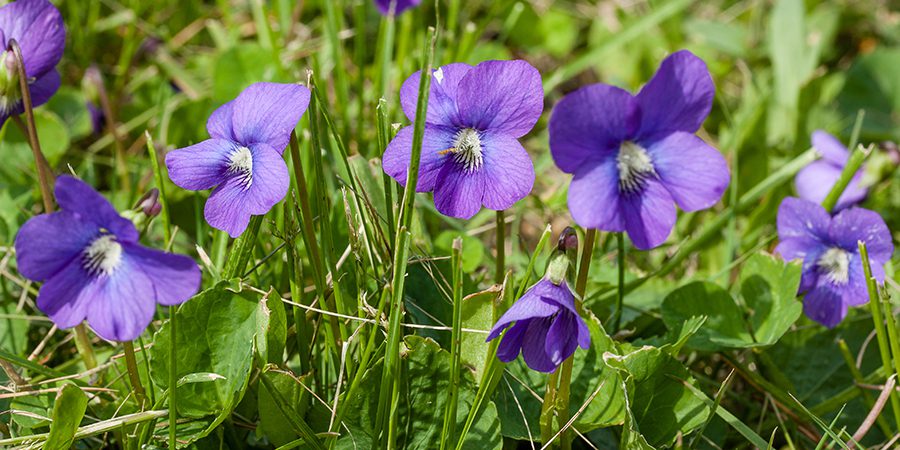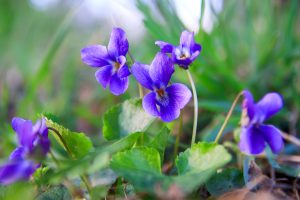Hard to Kill: Wild Violet

Wild violet is a perennial broadleaf weed that’s notoriously hard to kill. The wild violet family contains several species, including the common blue violet, wooly blue violet, and confederate violet. This blog post will explore how to identify and treat these weeds.
Wild violet has waxy, heart-shaped leaves. Flower color varies between species, but the common blue violet and wooly blue violet both have the same bluish-purple color. Wild violet has an extensive root system with rhizomes, which helps it spread quickly and also makes it difficult to kill.
When it comes to cultural control of wild violet, hand removal is futile because it’s almost impossible to entirely remove the strong rhizomes from the soil. Wild violets thrive in thin lawns where they can’t be choked out, which means that maintaining a thick lawn helps prevent an infestation.
Herbicides containing triclopyr and 2,4-D are the most effective at treating wild violet. Granular products will not effectively coat the leaves enough to be effective. Adjuvants also make a big difference in herbicide efficacy, as wild violet’s waxy leaves make it difficult for herbicides to work. However, ArmorTech’s Tetra and Nufarm’s Sure Power provide excellent control of wild violet without adjuvants.
Fall is the best time to treat wild violet. Broadleaf weed control is most successful in the fall because the weeds are preparing for winter by storing nutrients in their roots. Herbicides can go along for the ride to target the weed at the root.
It’s best to make an herbicide application on a sunny day without rain in the 24-hour forecast, as overcast conditions and rainfall reduce efficacy. Try to give the herbicide time to dry on the leaf surface.
Read product labels and consult your ATS representative for help selecting an herbicide and, potentially, adjuvant for your needs. Note that vegetables and flowers are susceptible to triclopyr and 2,4-D, so you shouldn’t use these active ingredients in garden areas.








